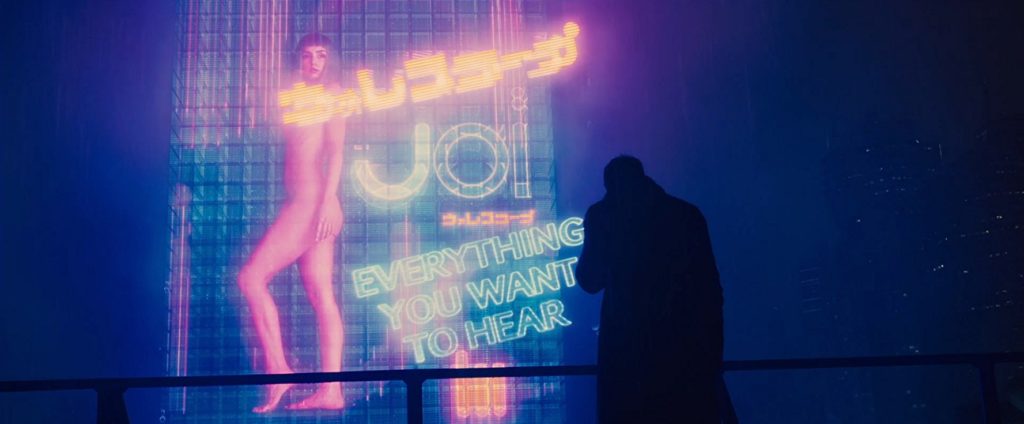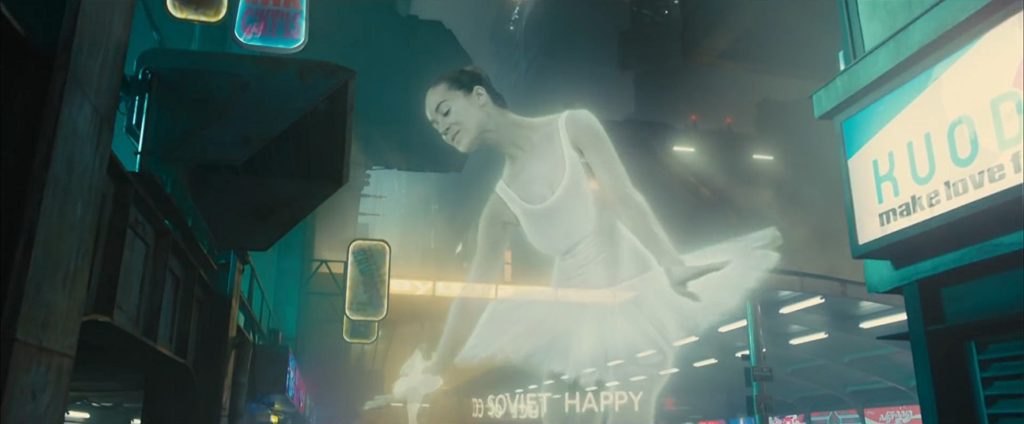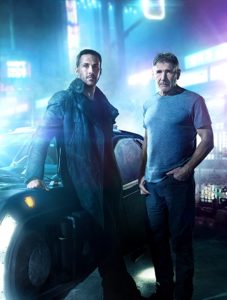Thirty-five years after the iconic Blade Runner hit theaters, director Denis Villeneuve brings his vision of the dystopian future to life in Blade Runner 2049. Fortunately, Blade Runner 2049 is a clear sequel, so we are spared another tiresome reboot/remake. Unfortunately, like most sequels, it’s far inferior to the original.
Blade Runner was a masterfully made noir that raised existential questions about what it means to be human. Blade Runner 2049 is the tedious, self-indulgent film you’d expect to get if a bunch of self-absorbed college theater majors were suddenly handed a huge budget. It tries way too hard to be profound, and takes way too long to do it.
The story takes place in a future where corporations wield governmental power, governments are irredeemably corrupt, and anyone who can flees off-world. Artificial humans called replicants are manufactured for slave labor. K (Ryan Gosling) is a blade runner with the job of hunting down and “retiring” replicants who go rogue. It is almost immediately revealed that K is a replicant himself. In the course of his duties, he discovers the buried remains of a long dead female replicant who had given birth. Like mules, replicants cannot reproduce, and the discovery of a fertile one is painted as a potentially world-breaking catastrophe. K is tasked with finding and eliminating the child before knowledge of its existence becomes widespread and destroys the social order.
The movie then devolves into a ponderous police procedural with unrelenting navel-gazing and philosophizing combined with nice eye candy. At 2 hours and 44 minutes, it desperately needed to be 30-40 minutes shorter. There is a difference between slow pacing to allow things to gel and dragging. This film definitely drags.


To be fair, world-building and stunning visuals are the film’s strongest points. Director of photography Roger Deakins did some truly masterful work, and the effects were beautifully executed. The world is viscerally bleak and claustrophobic. Neon holographic advertisements relentlessly bombard the senses. The areas outside the city are depressingly barren. San Diego is a huge garbage dump. Unlike many science-fictional settings, it feels like a place that could really exist if things got bad enough. But visuals will only carry you so far. No matter how striking the scenery is, one eventually gets tired of watching Ryan Gosling stare at it.

Blade Runner 2049 fancies itself a “thinking person’s” film, but the whole thing falls apart if you make the mistake of thinking about it too much. Take the central plot, for example. We are supposed to believe that millions of replicants are willing to docilely submit to slavery, but learning that one of them got pregnant once and gave birth nearly 30 years earlier would cause them to suddenly recognize their own humanity and rise up in rebellion.
This is rendered even more unbelievable when the parallel storyline is factored in. Niander Wallace (Jared Leto) is responsible for the production of replicants. He has a massive God complex and laments the fact that he is limited in the number of replicants he can make. His goal is to recover the lost secret of replicant fertility and start breeding them in massive numbers.
So which is it? On the one hand, a single fertile replicant destroys the social order. On the other, thousands, if not millions, of replicants can be used for breeding stock with no consequence. Can’t be both, so clearly somebody is full of crap.
Eventually, Harrison Ford shows up to reprise his role as Rick Deckard, the titular blade runner from the first film. His role is crucial, but he has a lot less screen time than the trailers would lead you to believe.

The original Blade Runner went through multiple re-releases and re-edits over the years, and maybe Blade Runner 2049 will get the same treatment. If so, perhaps we can hope for a cleaner, tighter, more watchable edit in a decade or so. In the meantime, Blade Runner 2049 is a turgid, pretentious affair that elitist brie-eating movie types are required to rave about if they want to be considered part of the in-crowd. The rest of us are free to say the Emperor has no clothes and move on.
Overall rating: 5/10


I disagree and enjoyed the movie immensely but I can see your points.